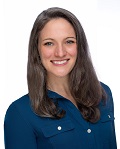Next Gen Navigator
NGSS Professional Learning Communities (PLCs)
Posted on 2019-12-19
Disclaimer: The views expressed in this blog post are those of the author(s) and do not necessarily reflect the official position of the National Science Teaching Association (NSTA).

Professional Learning Communities: Key to Improved Science Teaching and Learning
When teachers arrive at their school early in the morning, they are immediately absorbed into the delightful hustle and bustle of the day—chatting with energetic students during hall duty, making copies and gathering materials, answering parent questions, and troubleshooting technology issues—all before class even begins. When (and if) the coveted planning block arrives, they have so many questions to address in the short term that it’s often challenging to do long-term planning.
While finding time to collaborate with colleagues can be difficult, the writers of this month’s blog posts describe different ways collaboration through professional learning communities has helped them have a meaningful impact on student learning.
The blog posts are all written by former or current members of Achieve’s Science Peer Review Panel (Science PRP). The Science PRP is an elite cohort of educators from across the country with expertise in the Next Generation Science Standards (NGSS) and the EQuIP Rubric for Science that evaluates lessons and units to determine the extent to which they are designed for the NGSS. Peer reviewers are committed to providing quality feedback to developers to improve their materials and to promoting free and publicly available quality examples for all educators to use.
To continuously build peer reviewer expertise, the Science PRP is also an active professional learning community. Through each review, consensus conversation, and in-person meeting, peer reviewers grow professionally and are able to share their learning with colleagues in their home districts.
The authors of these blog posts illustrate three ways they leveraged professional learning communities to improve their science programs:
- Edel Maeder of New York discusses building elementary educators’ capacity in science through a district-wide Science Leadership Team.
- David Grossman of Kentucky writes about how two professional learning networks helped him develop and modify middle school instructional materials that made the vision of the NGSS a reality in his classroom.
- Holly Hereau of Michigan describes how a professional learning community helped create an equity-focused high school assessment system that builds student confidence in science.
Though each of these examples describes different goals and contexts, all three educators were able—despite their busy schedules—to create a professional learning community to help tackle big problems in their districts. If you don’t have access to a professional learning community near you, online communities on Twitter like #NGSSChat, @OfficialNGSS, and @NSTA can effectively connect you to resources and experts across the country.

Vanessa Wolbrink
Next Gen Navigator Guest Editor
Vanessa Wolbrink has supported science standards implementation efforts at Achieve since 2015. In addition to coordinating the work of the Science PRP, she has led several initiatives to support states and districts in improving their science efforts around equity, instructional materials, assessments, communications, collaboration, and data analysis. Before her policy work, she was a Teach for America educator who taught elementary students in the Charlotte-Mecklenburg School District. Connect with her via Twitter at @vawolb.
Improving Elementary Science Programs Through Professional Learning Communities
Greece Central School District’s PreK-12 Science Coordinator Edel Maeder shares her experience of launching a district-wide Science Leadership Team to help improve elementary teachers’ knowledge of three-dimensional science teaching and learning. Read more.
PLNs + High-Quality Units = NGSS Success
Kentucky science teacher David Grossman discusses how two professional learning networks—one comprised of experts; the other of colleagues—helped him create and adapt middle school instructional materials that embody the vision of the NGSS. Read more.
How PLCs Helped Move Us Toward Equitable High School Assessment Practices
Science educator Holly Hereau writes about how a professional learning community assisted her in the development of a high school assessment system that supports educational equity and fosters student confidence in science. Read more.
Note: The Next Gen Navigator is a monthly e-newsletter from NSTA delivering information, insights, resources, and professional learning opportunities for science educators by science educators on the Next Generation Science Standards and three-dimensional instruction. Click here to sign up to receive the Navigator every month.
The mission of NSTA is to promote excellence and innovation in science teaching and learning for all.
NGSS Professional Learning old Three-Dimensional Learning


